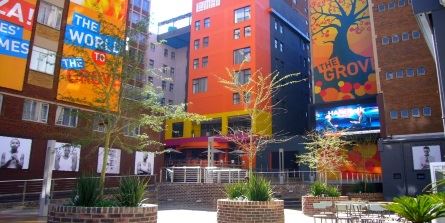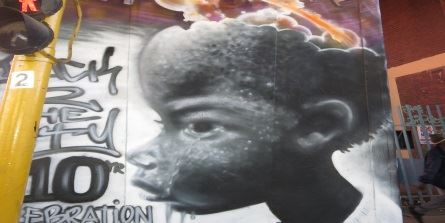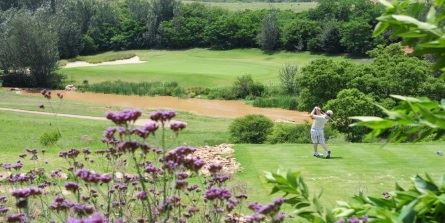An ever-growing list of things to explore and experience in Johannesburg are worthy of allocating more time to a visit, writes Michelle Colman.
According to Laura Vercuil, PR and Communication Officer of Johannesburg Tourism, marketing of the vibrant city to the leisure traveller is based on the premise that ‘Joburg is more than a stopover or gateway’.
From this emanates the ‘Explore, experience and enjoy Joburg in 72 hours’ campaign and slogan, intended to communicate why visitors should spend more time – at least three days – discovering the city.
Allied to this, Johannesburg Tourism’s marketing to business travellers and conference delegates takes the position that ‘there's more to Joburg than business’.
The city’s ‘don’t leave without experiencing’ attractions include the City Sightseeing Bus, Gold Reef City, the Johannesburg Zoo, the SAB World of Beer, Origins Centre, Montecasino, the Apartheid Museum and struggle sites such as Constitution Hill and Liliesleaf Farm.
Here are some reasons to spend more time in the colourful commercial capital of South Africa.
1.Urban Renewal

Much of Johannesburg’s new and trendy attractions are regeneration projects in inner city urban environments. Newtown, Maboneng, Braamfontein and the CBD itself spring to mind.
These developments, often mixed-use locations with residential and business components, tend to foreground arts and crafts, food and entertainment. Newtown has a clutch of museums, including Sci-Bono Discovery Centre and the SAB World of Beer, which now offers monthly beer and food pairings on a Saturday (dates for the balance of the year are October 15 and November 19). The precinct’s popular Market Theatre is now enhanced by Newtown Junction, a mall hosting a bunch of eateries and retail outlets.
Maboneng and Braamfontein have well-frequented weekend markets, design outlets, exhibition spaces and galleries. They showcase the work of emerging entrepreneurs, with a refreshing accent on home-grown products and strong African influences. Boutique-type hotels are beginning to make their appearance in these reinvigorated environments, along with walking and cycling tours.
Tip: For market fundis, Welcome Tourism Services suggests the Neighbourgoods Market in Braamfontein on Saturdays, and the Market on Main in Maboneng on Sundays. And, although it’s on the other side of town in a new suburban spread just across the road from Montecasino, the Fourways Farmers’ Market on Sundays is a great place for families to eat picnic-style and enjoy live music.
2.Art Routes

Johannesburg’s art galleries have decentralised, moving away from the inner city where once the Johannesburg Art Gallery reigned supreme. (Despite the downgrading of its neighbourhood in Joubert Park, JAG nevertheless remains worth visiting, along with the Standard Bank Gallery on the corner of Simmonds and Frederick Streets, which stages some fascinating exhibitions such as the current Henri Matisse: Rhythm and Meaning.)
A stretch of Jan Smuts Ave in Parkwood now houses a number of galleries worth ambling through, such as The Goodman Gallery, the Kim Sacks Contemporary Gallery, Lizzamore and Associates, David Krut Projects and others.
A short drive away in Rosebank are the Everard Read and Circa Galleries, as well as Gallery Momo, established in a renovated private residence in Parktown North to showcase South African and International Art.
In Braamfontein, the Wits Art Museum (WAM) is an enhancing addition to the art scene and displays many items from the university’s rich collection of African art. Currently on is a highly acclaimed exhibition by one of South Africa’s best known abstract artists, Walter Battiss.
Welcome Tourism Services highlights Johannesburg’s wealth of less conventional street art and graffiti culture, particularly notable in Newtown, which has become something of an outdoor gallery.
3.New shopping locales

Johannesburg’s reputation for shopping has long attracted buyers from all over the continent. A new venue to open in recent months is the 131 000sqm Mall of Africa at Waterfall City, about 20 minutes’ drive from central Sandton. It has 300 shops selling local and international brands.
The Rosebank Mall has also undergone recent, extensive renovations and is now much larger than before, with 150 stores. It also hosts two markets, the Rosebank Art & Craft Market (open daily) and the Rosebank Sunday Market, which has returned to its rooftop venue, after having been moved out for some time.
New at the ever-popular Sandton City is the Diamond Walk (as you enter the mall from the Sandton Sun) where stores featuring international luxury brands have opened, such as Jimmy Choo, Dolce and Gabbana and Prada.
4.Play a game of golf

With Johannesburg’s excellent climate, the chances of getting in a game of golf are good. Within 10km of Sandton there are 15 golf courses and over 30 in the greater Johannesburg area.
They include a number of new courses springing up in exclusive communities on all sides of the city. Among these are Steyn City Golf Course and Blair Athol Golf Course to the north, and Pecanwood Golf Course on the banks of the Hartbeespoort Dam.
Two of the best-rated within city borders are the Royal Johannesburg and Kensington Golf Club and Glendower Golf Club.
5.Take a hike

A few hours’ walk in the South African sunshine in indigenous veld surrounds is possible in urban Johannesburg, which has the good fortune to still feature protected nature reserves, within and without city limits.
The Klipriviersberg Nature Reserve to the south is the largest proclaimed nature reserve in the Johannesburg Metropolitan area. Here you can still come across game such as zebra, red hartebeest, and black wildebeest. It also holds much botanical, geological, archaeological, historical and cultural interest and over 200 species of birds.
To the west, the Kloofendal Nature Reserve is popular for picnics, hiking trails of up to 3.5km and guided tours organised by the Friends of Kloofendal. It also has small game and birdlife and the remains of early gold mining. Another choice walking spot in the west is the Walter Sisulu Botanical Gardens in Roodepoort, consisting of 300 hectares of botanical reserve.
Melville Koppies is a nature reserve and heritage site, with evidence of habitation going back to the Stone Age. Organised tours and hikes are recommended to get the most out of a visit here, although some of them can be quite strenuous.
Lauren Kemp, Marketing and Communications Manager for Tourvest Destination Management, throws in another suggestion, pointing out that the recently secured Northcliff Hill offers the most spectacular 360-degree views from the Magalies Mountains to the city skyline. According to Gauteng Tourism’s website, the hill is the second highest point in the city at 1 807m and the hike is quite taxing, but the views are worth the sweat. One can drive to the top as an alternative.






















